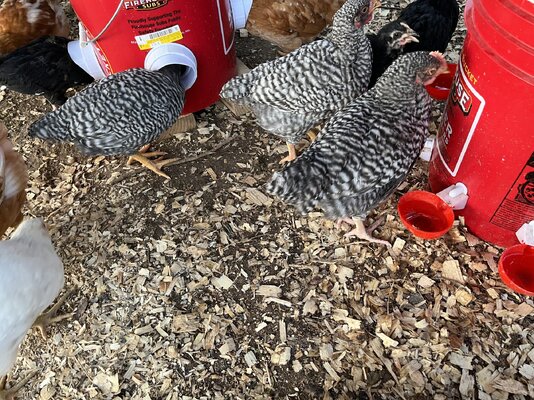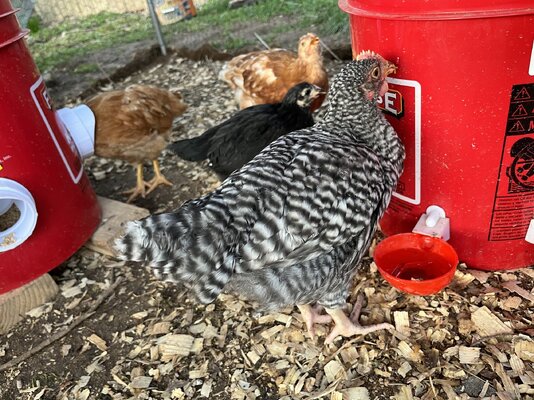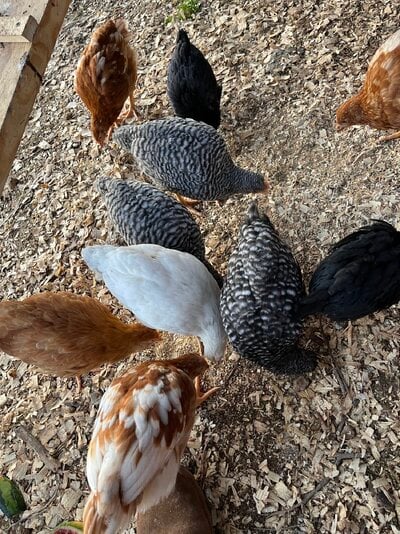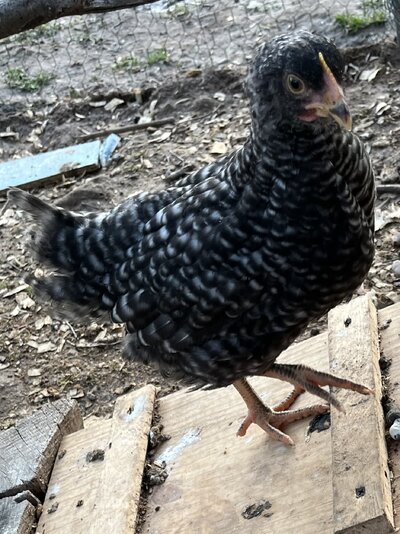@NatJ thinking I might have a cuckoo marans as well- what do you think? His legs are much lighter and pinkish on the bottom. Front right in the first pic. I really can’t tell with the barring. 
Attachments
Last edited:








